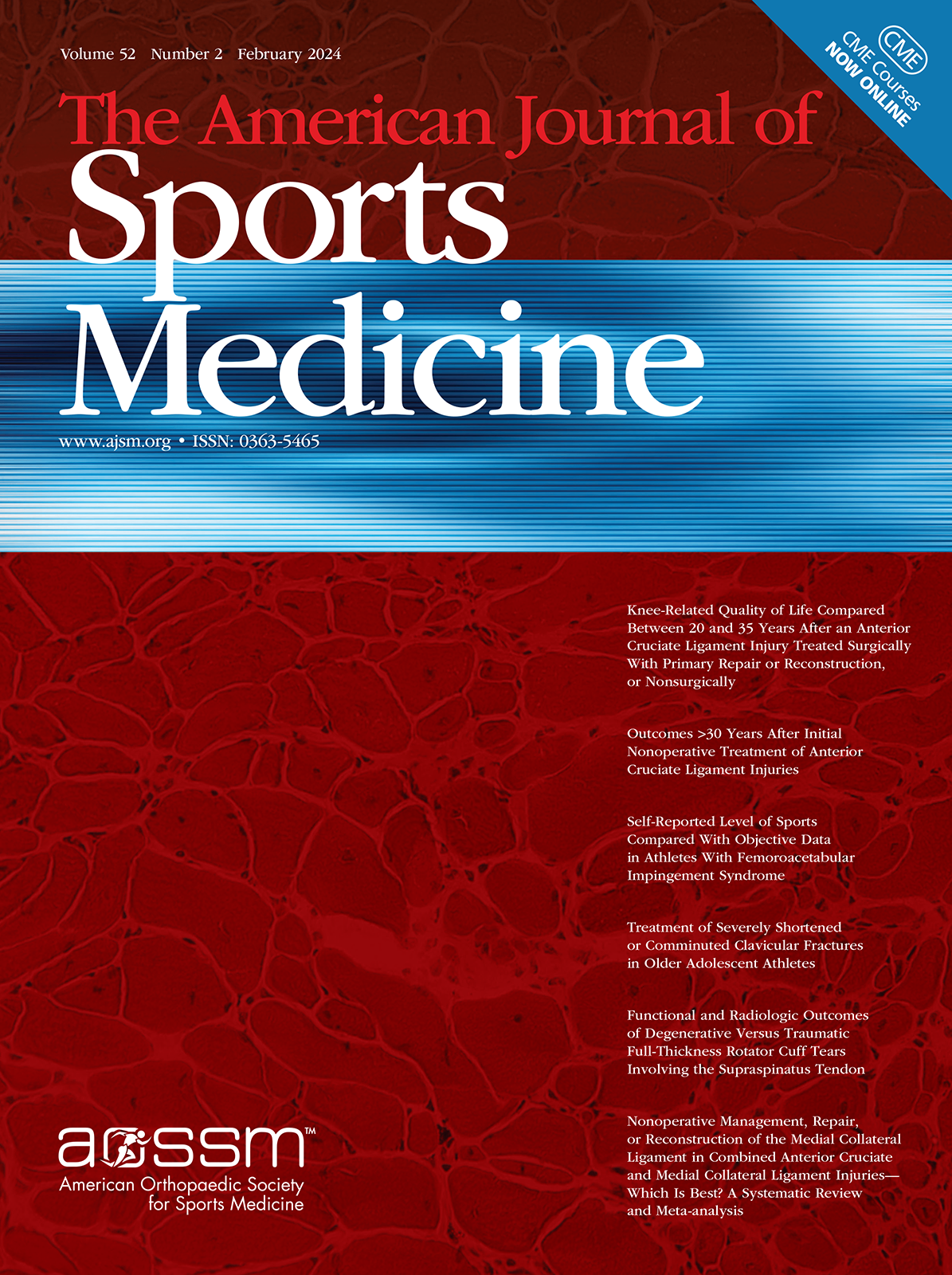
PRP application to BPTB graft donor site does not reduce kneeling pain after ACLR

PRP application to BPTB graft donor site does not reduce kneeling pain after ACLR
Effect of Intraoperative Platelet-Rich Plasma Treatment on Postoperative Donor Site Knee Pain in Patellar Tendon Autograft Anterior Cruciate Ligament Reconstruction: A Double-Blind Randomized Controlled Trial
Am J Sports Med. 2018 Jul;46(8):1827-1835. doi: 10.1177/0363546518769295Did you know you're eligible to earn 0.5 CME credits for reading this report? Click Here
Synopsis
59 patients scheduled for anterior cruciate ligament reconstruction with an autologous bone-patellar tendon-bone graft were randomized to have the patellar defect filled in with either PRP-soaked or non-augmented cancellous bone chips. Patients were assessed for kneeling pain, pain during activities of daily living, function (IKDC score), and MRI parameters of donor site healing over a 2-year foll...
To view the full content, login to your account,
or start your 30-day FREE Trial today.
FREE TRIAL
LOGIN
Forgot Password?
Explore some of our unlocked ACE Reports below!

Learn about our AI Driven
High Impact Search Feature
Our AI driven High Impact metric calculates the impact an article will have by considering both the publishing journal and the content of the article itself. Built using the latest advances in natural language processing, OE High Impact predicts an article’s future number of citations better than impact factor alone.
Continue



 LOGIN
LOGIN

Join the Conversation
Please Login or Join to leave comments.